CABIN IN THE WOODS: Killing The Horror Genre With Cleverness
No horror film released this year is likely to inspire as many nerdgasms as The Cabin In The Woods. Just visit any of the usual fanboy film websites and you'll see endless pages of praise proclaiming it to be the best horror film in years, a film that reinvents the genre and a "game-changer" for the world of horror cinema. However, it is more of a geek culture love-in than a horror movie - and your response to it will depend entirely on your level of patience with self-consciously clever filmmaking.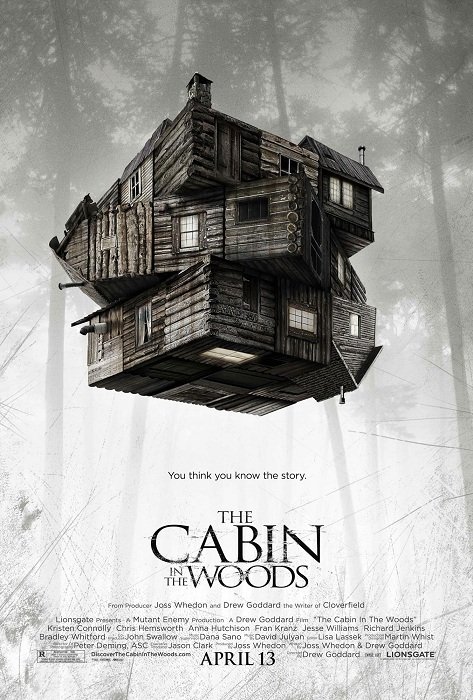 The Cabin In The Woods throws its first curveball at the audience with its setup: instead of starting with the obligatory horror flick setup the title suggests, it starts with a brief scene of Hadley (Bradley Whitford) and Sitterson (Richard Jenkins), going to work in some sort of high-tech, massive corporate lab. Then the film cuts away to Plotline B: this is the horror stuff, with a gaggle of college kids heading off to the title location. There's a nice girl/final girl (Kristin Connolly), a sexy girl (Anna Hutchison), a nice guy(Jesse Williams), a jock (Chris Hemsworth) and a wiseass stoner (Fran Kranz).The people in Plotline B run into the expected horror movie scenarios - a creepy gas station owner who warns them away, suspicious items tucked away in the cabin's basement - as the people in Plotline A are revealed to be manipulating the events in Plotline B with their arsenal of high-tech equipment. The synopsis will end here to preserve the film's real surprises but let's just say "meta" is the order of the day with this film, from start to finish.
The Cabin In The Woods throws its first curveball at the audience with its setup: instead of starting with the obligatory horror flick setup the title suggests, it starts with a brief scene of Hadley (Bradley Whitford) and Sitterson (Richard Jenkins), going to work in some sort of high-tech, massive corporate lab. Then the film cuts away to Plotline B: this is the horror stuff, with a gaggle of college kids heading off to the title location. There's a nice girl/final girl (Kristin Connolly), a sexy girl (Anna Hutchison), a nice guy(Jesse Williams), a jock (Chris Hemsworth) and a wiseass stoner (Fran Kranz).The people in Plotline B run into the expected horror movie scenarios - a creepy gas station owner who warns them away, suspicious items tucked away in the cabin's basement - as the people in Plotline A are revealed to be manipulating the events in Plotline B with their arsenal of high-tech equipment. The synopsis will end here to preserve the film's real surprises but let's just say "meta" is the order of the day with this film, from start to finish. So what exactly is this tricky little genre exercise up to? Perhaps it easiest to start by figuring out what The Cabin In The Woods is not:1) despite the jump scares and horror iconography, it's not a horror movie: this film is really a genre satire that uses the narrative language of horror movies to make its points. It also happens to be a satire concocted by people who allow any love for the horror film to be overpowered by their contempt for its current state.
So what exactly is this tricky little genre exercise up to? Perhaps it easiest to start by figuring out what The Cabin In The Woods is not:1) despite the jump scares and horror iconography, it's not a horror movie: this film is really a genre satire that uses the narrative language of horror movies to make its points. It also happens to be a satire concocted by people who allow any love for the horror film to be overpowered by their contempt for its current state.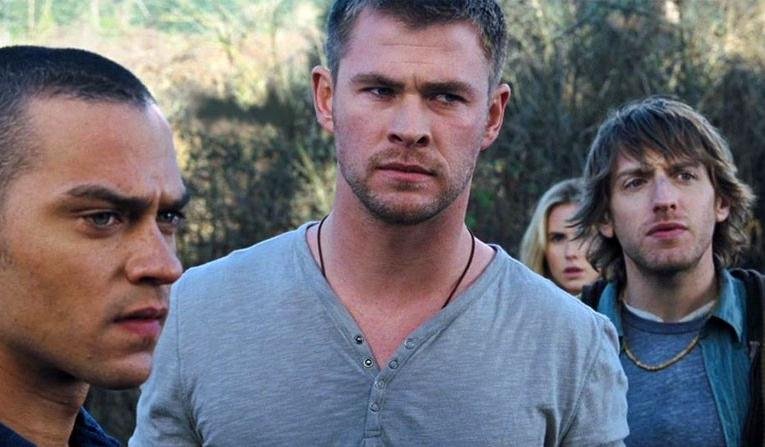 2) it doesn't reinvent horror: comedic deconstruction of the horror genre has been around since Abbott And Costello Meets Frankenstein. In fairness to the filmmakers, they're drawing on a bigger canvas and their satirical take has more moving parts to it but that just makes it a more conceptually grand addition to an already existing tradition.3) it's not a game-changer: if the next wave of horror movies is going to be a series of self-consciously clever deconstructions of the genre, don't expect the genre to live much longer than this film's theatrical run.
2) it doesn't reinvent horror: comedic deconstruction of the horror genre has been around since Abbott And Costello Meets Frankenstein. In fairness to the filmmakers, they're drawing on a bigger canvas and their satirical take has more moving parts to it but that just makes it a more conceptually grand addition to an already existing tradition.3) it's not a game-changer: if the next wave of horror movies is going to be a series of self-consciously clever deconstructions of the genre, don't expect the genre to live much longer than this film's theatrical run.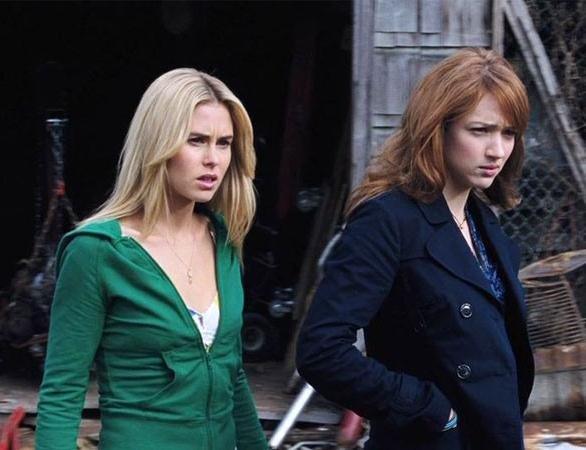 The Cabin In The Woods is a film of two distinct parts and each part has its own issues. The first part of the film allows Plotline A to constantly comment on and deconstruct the more conventional Plotline B. If you appreciate meta-tricky storytelling, this is swell but if you like getting lost in the storyline of a film, forget about that happening here. You will be constantly reminded that you're watching a movie - and it's all done in a way that calls attention to its creators' cleverness and technique rather than getting the audience engrossed in the work itself.
The Cabin In The Woods is a film of two distinct parts and each part has its own issues. The first part of the film allows Plotline A to constantly comment on and deconstruct the more conventional Plotline B. If you appreciate meta-tricky storytelling, this is swell but if you like getting lost in the storyline of a film, forget about that happening here. You will be constantly reminded that you're watching a movie - and it's all done in a way that calls attention to its creators' cleverness and technique rather than getting the audience engrossed in the work itself.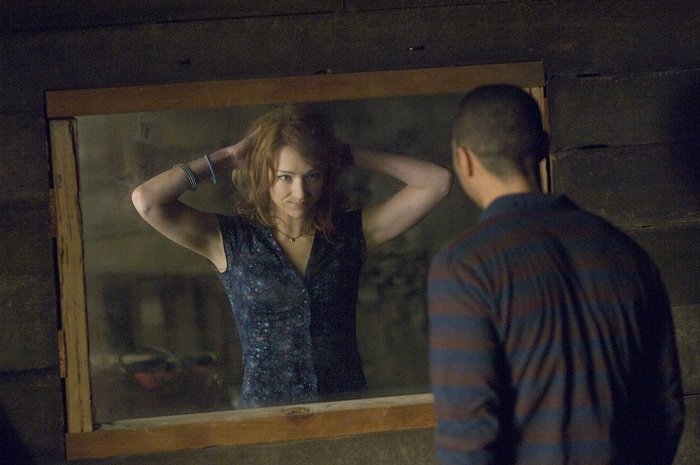 This part of the film is like watching a skilled magician create a skillfully rendered illusion then stop to say "Like that trick? Let me show you how it's done. Kinda silly, huh? Can't believe people fall for this stuff. Oh, well... on to the next trick." It's also weighed down by a certain lack of humility about its own creative genius: it is difficult to get into the work the filmmakers are doing when they're elbowing you in the ribs every two minutes to remind you how clever they are - and how silly they consider the task at hand.
This part of the film is like watching a skilled magician create a skillfully rendered illusion then stop to say "Like that trick? Let me show you how it's done. Kinda silly, huh? Can't believe people fall for this stuff. Oh, well... on to the next trick." It's also weighed down by a certain lack of humility about its own creative genius: it is difficult to get into the work the filmmakers are doing when they're elbowing you in the ribs every two minutes to remind you how clever they are - and how silly they consider the task at hand. The second part of the movie, essentially its third act, changes up the game and takes some interesting chances. However, this brings in a new and different set of problems. Without getting into too many spoilers, let's just say The Cabin In The Woods becomes a noisy, colorful blur that flirts with Big Ideas About The Horror Genre rather than exploring them.In fact, the final reel is vague enough that it has been interpreted in a number of ways but this is how it seems to Your Humble Reviewer: as the final revelations tumble out in a twisty-turny way, they basically suggests that the genre is a joyless, dying machine designed to appease an
The second part of the movie, essentially its third act, changes up the game and takes some interesting chances. However, this brings in a new and different set of problems. Without getting into too many spoilers, let's just say The Cabin In The Woods becomes a noisy, colorful blur that flirts with Big Ideas About The Horror Genre rather than exploring them.In fact, the final reel is vague enough that it has been interpreted in a number of ways but this is how it seems to Your Humble Reviewer: as the final revelations tumble out in a twisty-turny way, they basically suggests that the genre is a joyless, dying machine designed to appease an 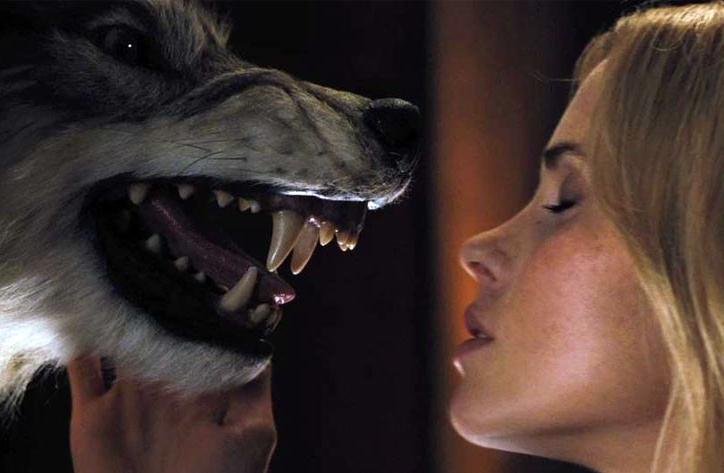 essentially brainless audience who values bloodshed over surprises. Some viewers might feel conspiratorial joy at this notion but it felt like a slap in the face to Your Humble Reviewer.This is all unfortunate because The Cabin In The Woods is obviously the work of talented people. Whedon and Goddard know how to tell a story that moves and Goddard gives it a slick look and gets strong performances from a game cast. It's a shame they allow their
essentially brainless audience who values bloodshed over surprises. Some viewers might feel conspiratorial joy at this notion but it felt like a slap in the face to Your Humble Reviewer.This is all unfortunate because The Cabin In The Woods is obviously the work of talented people. Whedon and Goddard know how to tell a story that moves and Goddard gives it a slick look and gets strong performances from a game cast. It's a shame they allow their 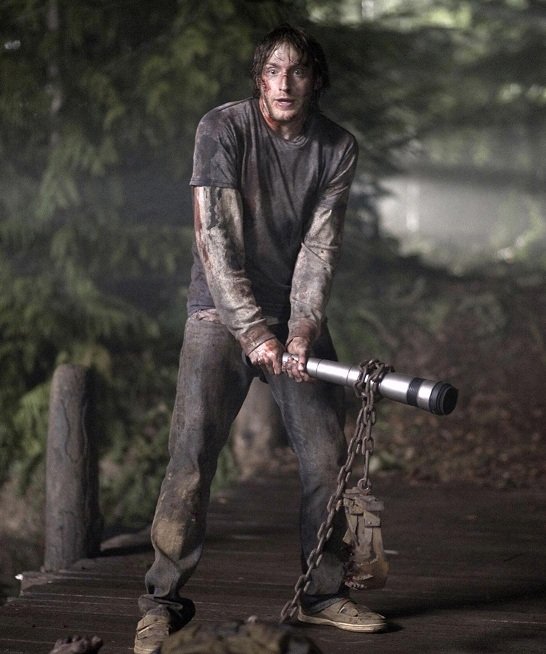 "wink wink, nudge nudge" satirical antics to override every other storytelling concern. As a result, it comes off more as a feat of self-impressed geek showmanship rather than the wake-up call for the genre that it seems to think it is.The end result teaches an important lesson: if you think a genre is dying, making a smarmy meta-parody of it is not the solution. Create the fabled "new concept" that you yearn for and blow the fanbase's mind with the dazzling depths of your creativity. Wagging your finger at the audience for taking what they're given is just a dodge. The creators must lead the way - and The Cabin In The Woods is ultimately a frustrating experience because it has enough craft and smarts to suggest that its creators might be capable of pulling off such a genre reinvention but they aren't willing to try. After all, it's much easier to adopt a smartass tone and pander to the fanboy crowd.
"wink wink, nudge nudge" satirical antics to override every other storytelling concern. As a result, it comes off more as a feat of self-impressed geek showmanship rather than the wake-up call for the genre that it seems to think it is.The end result teaches an important lesson: if you think a genre is dying, making a smarmy meta-parody of it is not the solution. Create the fabled "new concept" that you yearn for and blow the fanbase's mind with the dazzling depths of your creativity. Wagging your finger at the audience for taking what they're given is just a dodge. The creators must lead the way - and The Cabin In The Woods is ultimately a frustrating experience because it has enough craft and smarts to suggest that its creators might be capable of pulling off such a genre reinvention but they aren't willing to try. After all, it's much easier to adopt a smartass tone and pander to the fanboy crowd.


